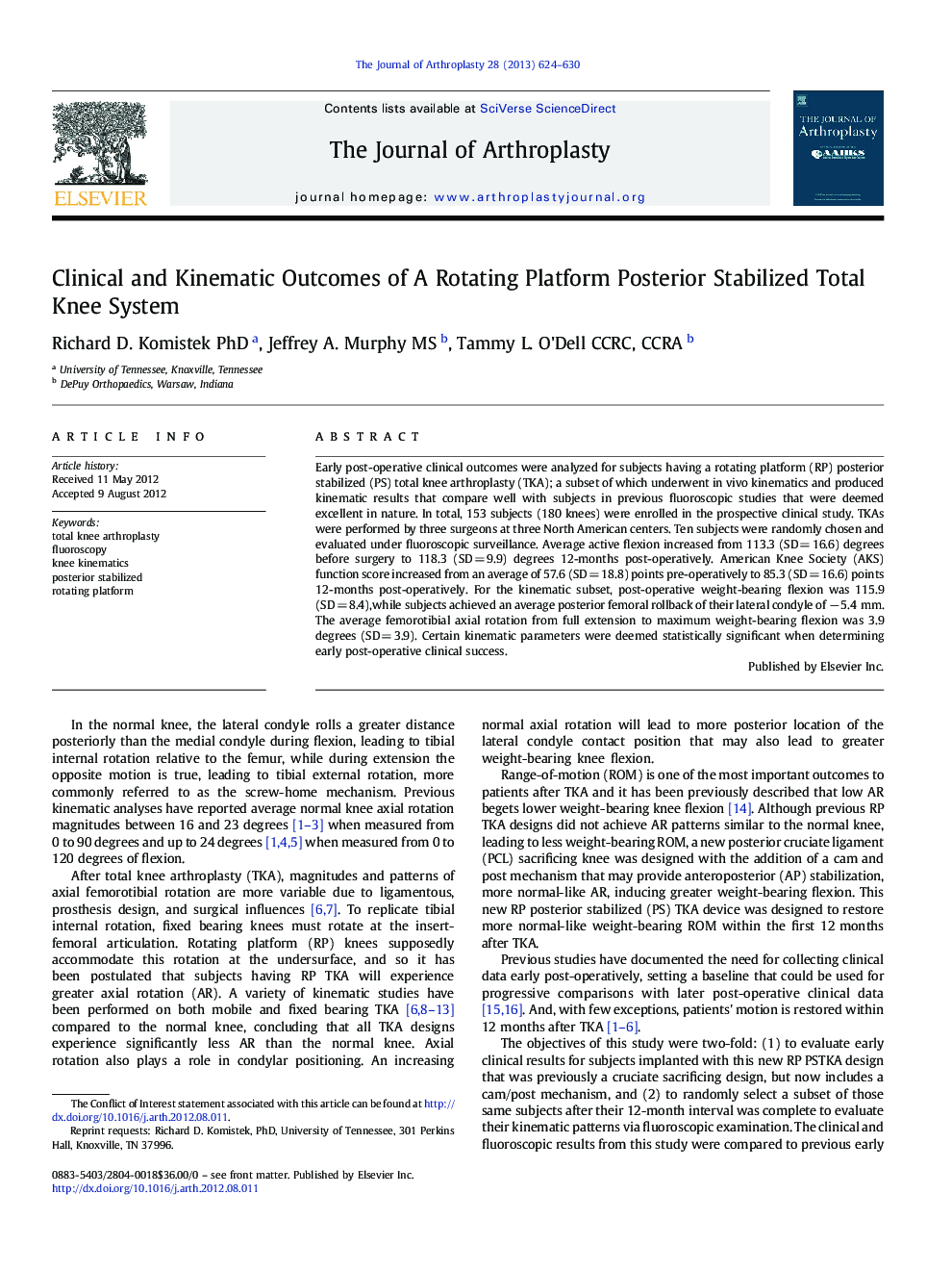| Article ID | Journal | Published Year | Pages | File Type |
|---|---|---|---|---|
| 4061326 | The Journal of Arthroplasty | 2013 | 7 Pages |
Early post-operative clinical outcomes were analyzed for subjects having a rotating platform (RP) posterior stabilized (PS) total knee arthroplasty (TKA); a subset of which underwent in vivo kinematics and produced kinematic results that compare well with subjects in previous fluoroscopic studies that were deemed excellent in nature. In total, 153 subjects (180 knees) were enrolled in the prospective clinical study. TKAs were performed by three surgeons at three North American centers. Ten subjects were randomly chosen and evaluated under fluoroscopic surveillance. Average active flexion increased from 113.3 (SD = 16.6) degrees before surgery to 118.3 (SD = 9.9) degrees 12-months post-operatively. American Knee Society (AKS) function score increased from an average of 57.6 (SD = 18.8) points pre-operatively to 85.3 (SD = 16.6) points 12-months post-operatively. For the kinematic subset, post-operative weight-bearing flexion was 115.9 (SD = 8.4),while subjects achieved an average posterior femoral rollback of their lateral condyle of − 5.4 mm. The average femorotibial axial rotation from full extension to maximum weight-bearing flexion was 3.9 degrees (SD = 3.9). Certain kinematic parameters were deemed statistically significant when determining early post-operative clinical success.
